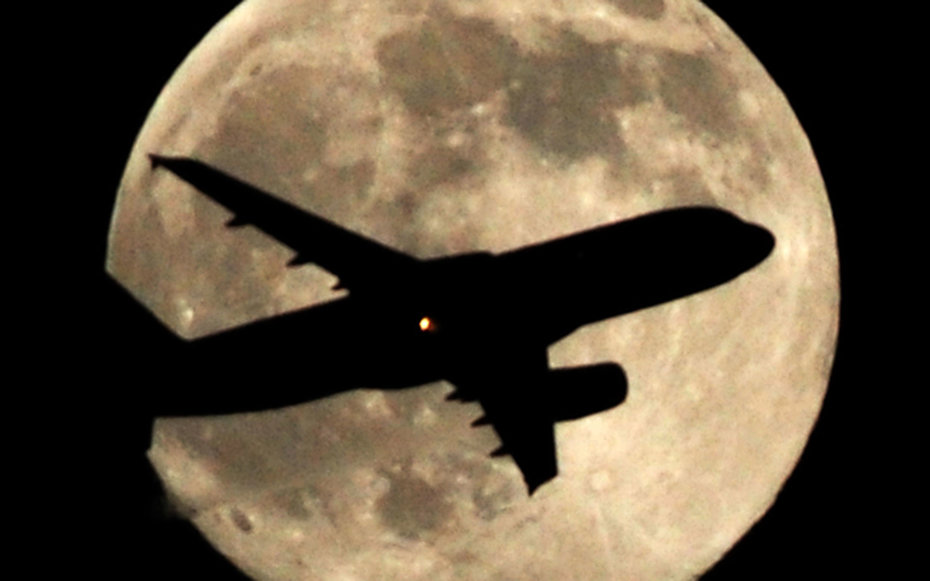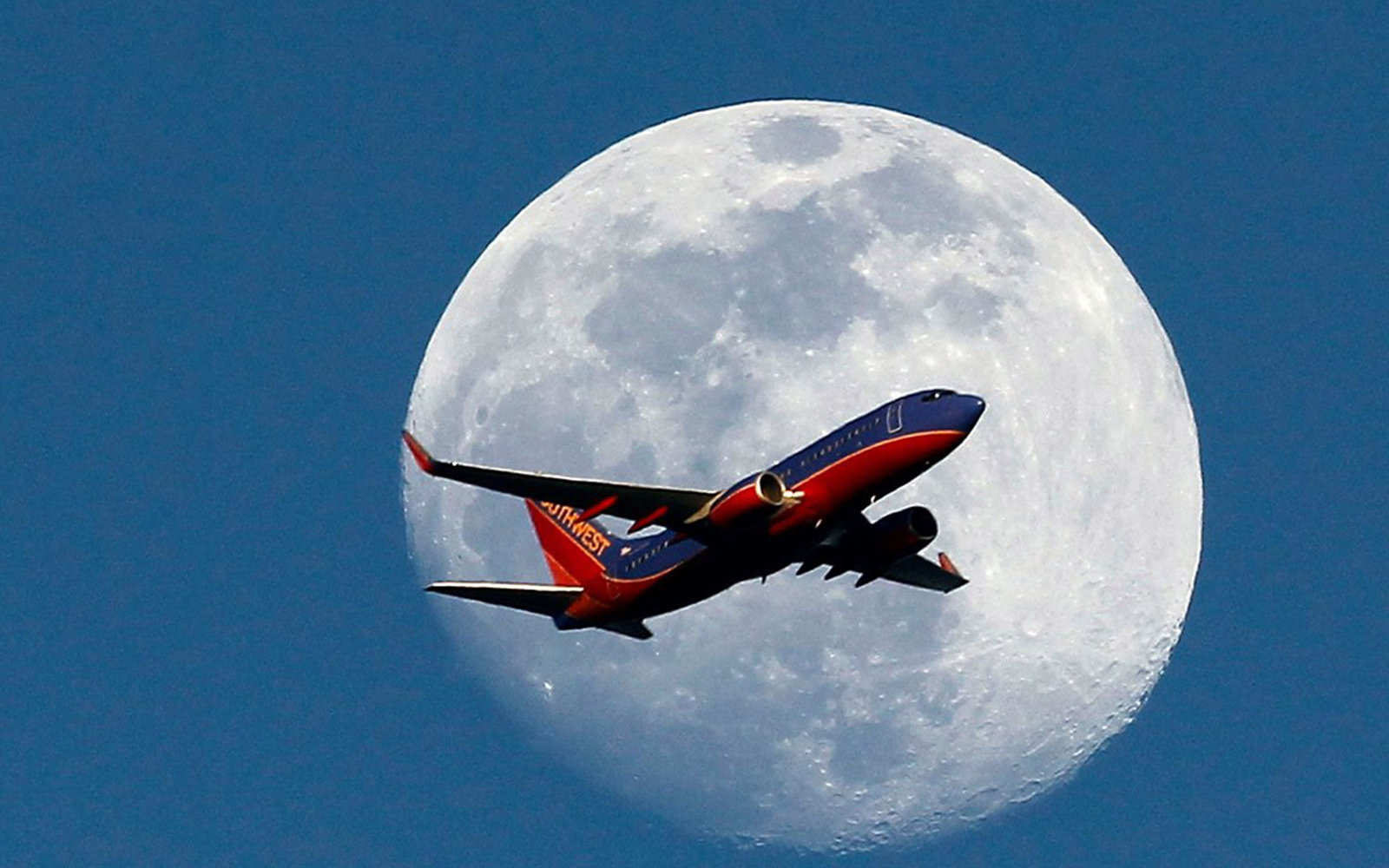 Nick Ut
Nick Ut
The surreal shots they get are incredible.
Every month, Raul Roa and his friends chase the moon. Armed with massive lenses, tripods, and flight data, they lay in wait for hours, ready to shoot an airplane perfectly framed against the glowing orb when it’s full. So perfect, in fact, some people assume their shots are photoshopped.
For a photojournalist like Roa, that’s a non-starter, if not heresy. Roa, who covers east Los Angeles for the Los Angeles Times, and his friend Nick Ut, the Associated Press photographer who won the 1973 Pulitzer for his iconic “Napalm Girl” photograph during the Vietnam War, dismiss the naysayers with their pictures. With a handful of fellow shooters, they’ve mastered the preparation, skill, luck, and timing to catch the planes’ lunar crossing at just the right moment. It’s as much science as it is an art. It’s also an obsession. It’s no wonder they call themselves the “LunARTics.”
Roa’s been shooting planes crossing the moon for a decade. But for the last 28 months, he’s shown up every time the moon waxes full, several LunARTics in tow. They convene in Whittier, about 30 miles from LAX and 12 miles southeast of Los Angeles. They often get the “money shot,” although there’s the occasional night they wait past midnight and come back empty-handed. Such is the hunt.
“I want to see different things being silhouetted by the moon. It’s almost like a little kid wanting to explore things,” Roa says. “But so far this is the only way I can explore. By looking at it.”
A happy discovery 10 years ago ballooned into his current habit. On the way home from work, Roa looked up and saw a plane cross and wondered if he could capture it. It just so happens that he lives in Whittier—in a neighborhood underneath the flight paths to LAX.
As he posted his pictures on social media, fellow photographers became interested and started to join him. First Ut and Los Angeles Business Journal’s Ringo Chiu, then others. Other Pulitzer winners, like Reed Saxon, may drop in, as do friends in the field, like Ut’s colleague Damian Dovarganes. Some work as portrait or landscape photographers. Some are devoted hobbyists. LunARTics provides a monthly excuse to get together; its a salon of sorts. You spend a lot of time waiting—for the sun to set, for the moon to rise, for the planes to come in—so you get to know each other. “It's nice to spend time with like-minded people who share the same creative disease,” says commercial photographer Katrina Brown.
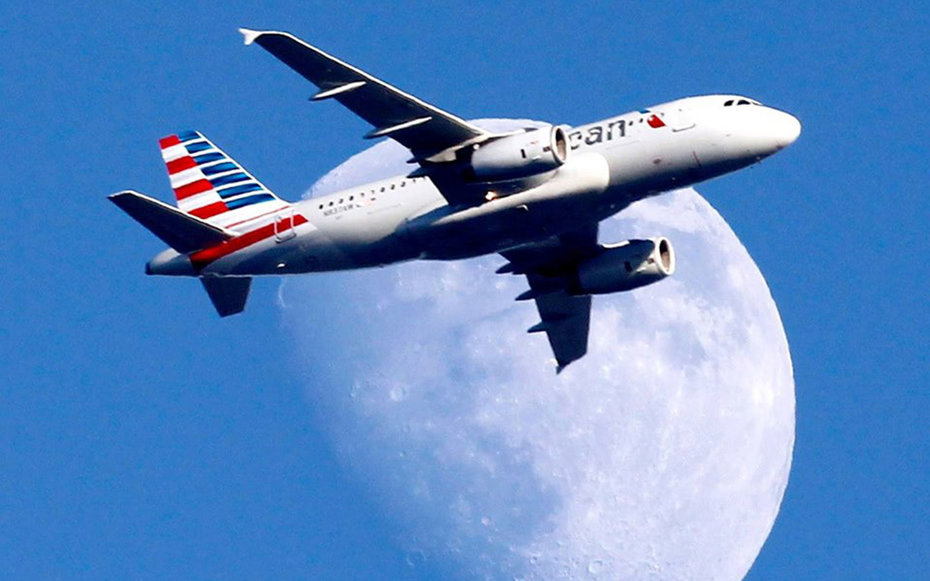
But don’t let these professionals intimidate you. Roa is so passionate about his niche he wants to teach other people—including amateur shutterbugs—how to take these photos. Visitors to L.A., as well as from the city proper or Orange County, have come in for the workshops.
For a hybrid spectator-participant, watching those watching the planes is sport. Part birding, part golf, the periods of languid waiting gives way to intense bursts of action. The casual chitchat and flinging of friendly jokes (mostly aimed at Ut) halts the moment a plane looks like it’s high enough to cross. Like trombone players, the photographers lift lenses heavy enough to break your hand if they were to come down wrong.
Then it’s either a skeptical, “It’s too low,” from a veteran like Ut, or an excited chorus of, “This is it! This is it!” When a plane approaches at the right height, the photographers—who are usually organized in a line—scramble in anticipation or, if time allows, scurry and jockey into a new position. If the plane doesn’t line up, there’s a collective “Ohhh,” of disappointment. If a plane crosses, it’s off to the races: shutters clacking, literal hoots and hollers, and enough “Yeah baby!” to go around. In either case there’s bound to be some cursing.
I’ve covered stories with Ut in Los Angeles for years as a fellow reporter, and have seen these pictures continuously pop up on his Facebook feed. I tagged along for the first time this past May. Despite the hour-plus drive, now I go every month I’m in town, mostly for the camaraderie, but also for the sport. Sometimes we barbecue, sometimes we share snacks—tacos, Chinese or Vietnamese sweets, cake—and catch up. The monthly meeting provides a gentle rhythm for those whose lives are spent battling traffic or space for work.
Then there are the images, which are as gorgeous as they are varied. Cardinal red and blue markers of a Southwest jet pop against the robin’s egg–hued late afternoon sky in a shot by Ut. “That’s my favorite, I like the colors,” Ut told me in May. I asked him if it ever got boring, shooting the same thing over and over again. “Every picture is different," he said. "So beautiful. Never boring.”
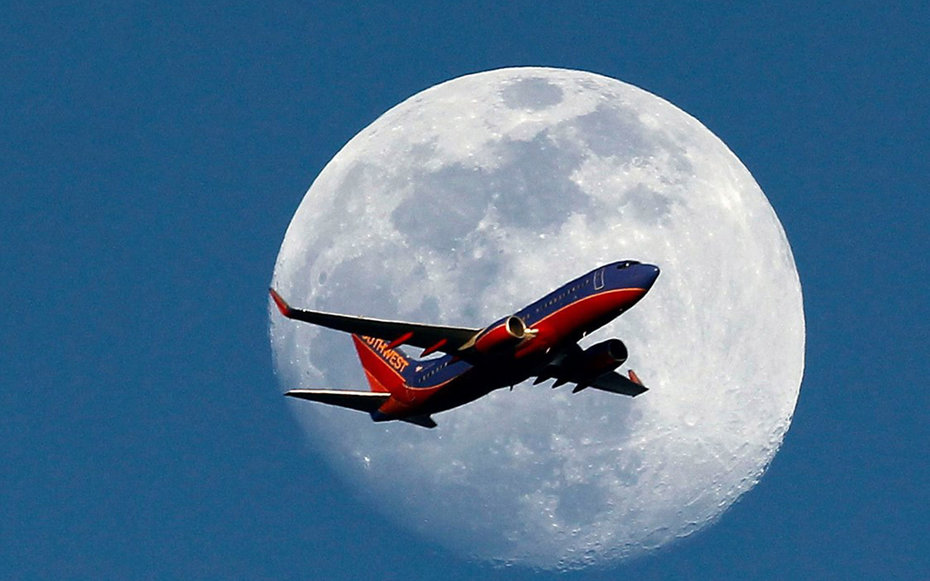
Viewing galleries of the photos makes you realize how many different moons there are. Even the most quotidian commercial plane can look majestic in the right frame. The daylight moon can lend life to a Fedex jet, an American Airlines plane, an Air New Zealand plane, transforming them into birds of magnificent plumage.
At night the photos appear haunting. All manner of white commercial jets captured against a glowing moon loom ominously, suspended in a sharp, black sky. There are small Lear jets, Boeing 747s and 787s, the jumbo Airbus 380s, planes with wheels up, and, sometimes, the rare shot of wheels down captured in flight. For those who play, the variations are endless, the potential new challenges enough to keep coming back every 28 days.
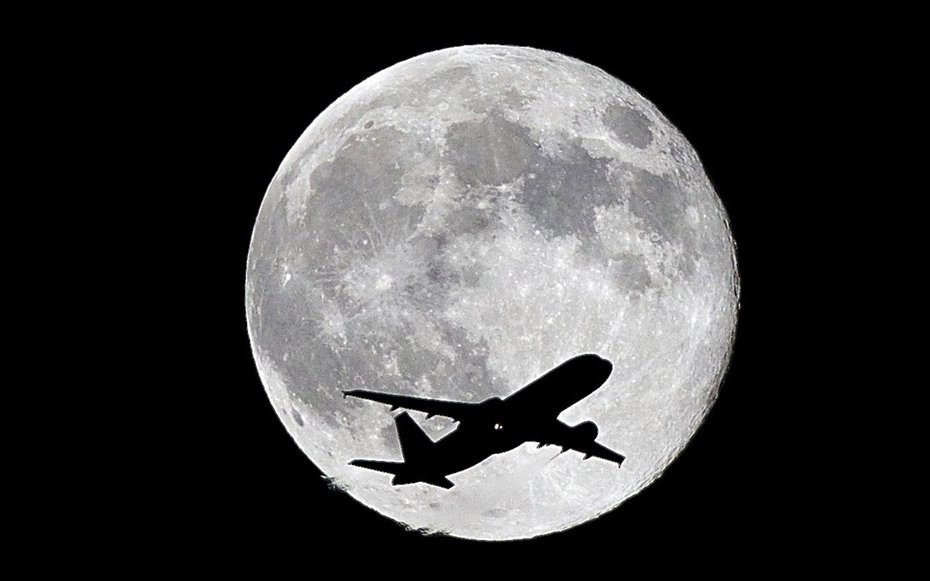
But like sportsmen, there’s always the thrill of upping the challenge and going beyond.
Take this past September 27. A lunar eclipse coupled with a super blood moon—an event that won’t reappear until 2033—occurred, presenting a nesting doll full of lighting challenges. A supermoon occurs when the moon’s orbit is closest to earth, which makes the moon appear 14 percent larger and up to 33 percent brighter. During an eclipse, the earth passes between the sun and the moon, and our home planet’s atmosphere casts a red “blood” glow on the moon, while it gets darker and smaller.
“This is a super exciting, super tricky one because the exposure will be completely different from another moon. Being an eclipse it’ll be getting darker and darker as it’s coming up. A really slow shutter. This has never been done before. They may have gotten a supermoon or a blood moon, but never a super blood moon. This is an epic shot,” Roa says.
After all the build-up the actual conditions of the night proved disappointing. “It just wasn’t syncing,” says Jamie Howren. But she’ll keep coming back. “It's like an athlete. Once you've gotten the match point, the athlete continues to play. It's a commitment to excel and do it better the next time. For me, it’s the challenge of flight patterns aligning with the timing of Mother Nature’s placement of the moon in the sky, combined with the timing of one's camera shutter. When you get that shot, it's like getting the game-winning touchdown! It feels awesome!”
As for the godfather of the group, Roa, like any explorer, says that the more he sees, the more he realizes is left to discover.
“The elusive shot may be the International Space Station crossing the moon. People have done it. It’s about being at the right place at the right time. Or two planes crossing at the same time. We almost had it one time by 15 seconds. The more we look the more we find,” Roa says. “We always say, ‘One more, one more.’ Even if we get good shots, we’ll say, ‘One more.’ It’s so challenging and so hard to do, the thrill of getting something like that—the elation. I’m not going to stay it’s like a drug, but the elation—it’s tremendous. I don’t think I’ll ever stop because I’m always looking up at the sky.”
